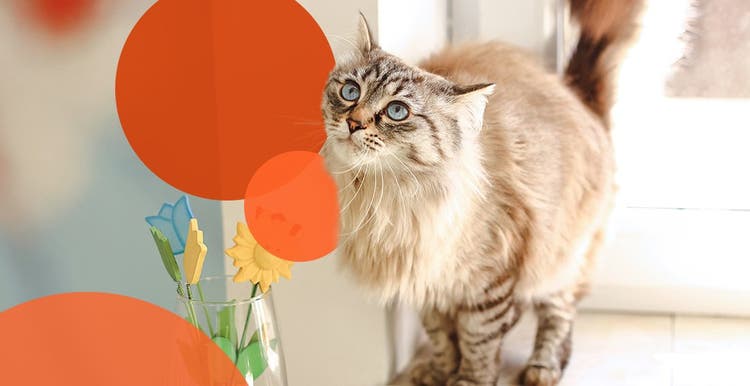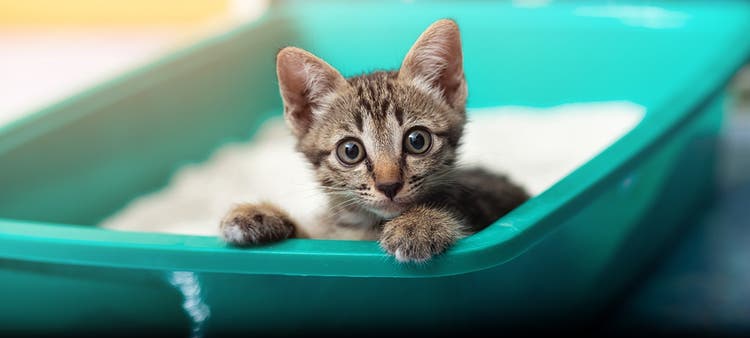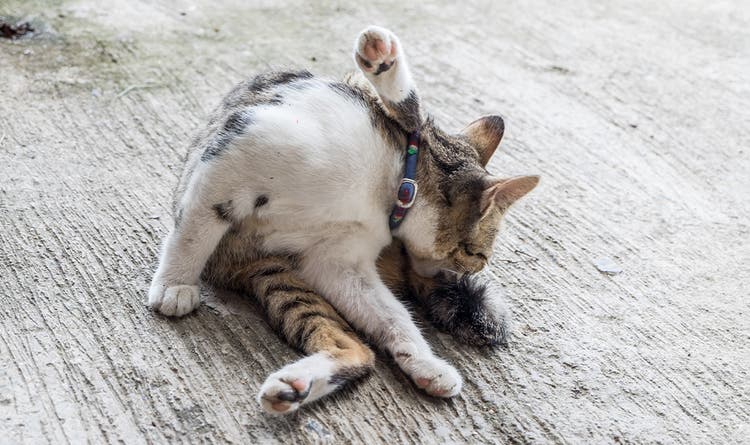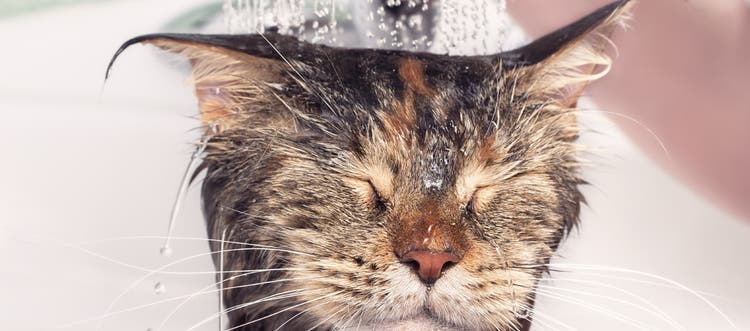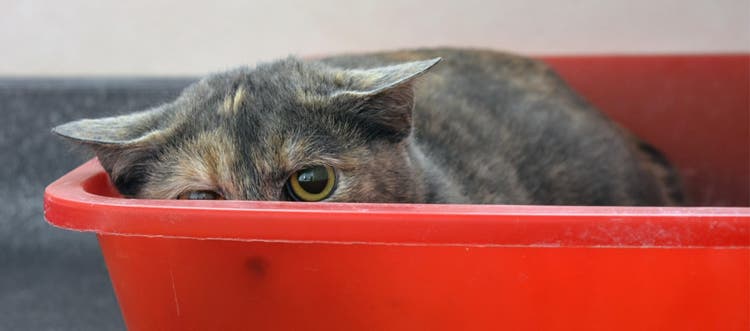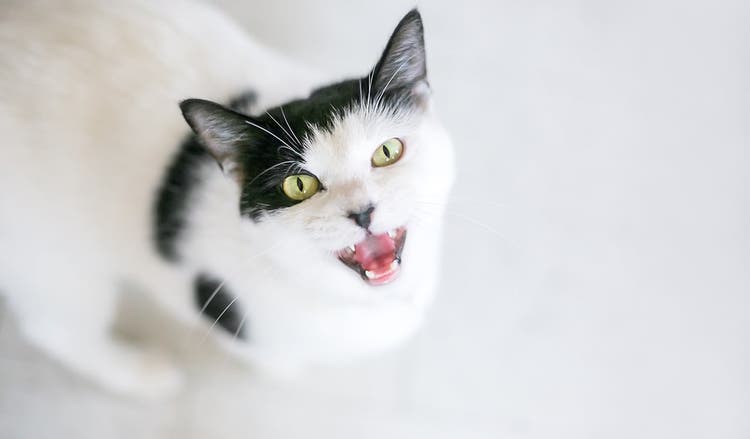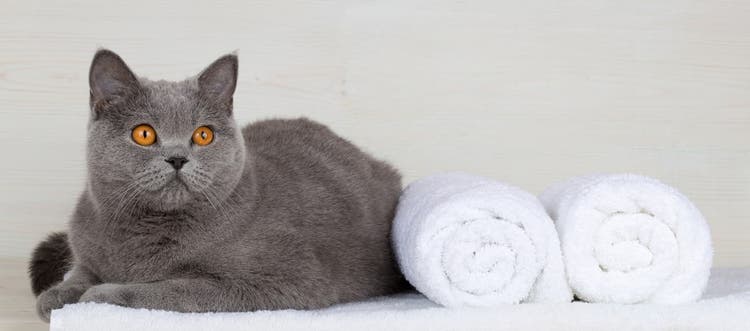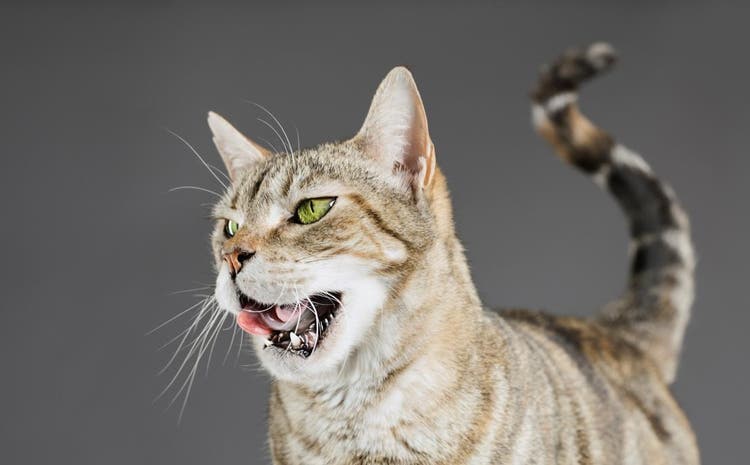Get tips for cleaning up cat urine.
So your cat urinated outside their litter box - what should you do now?
Cat urine has a strong, distinct odor that can be difficult to eliminate. But it's possible to remove the smell completely from most surfaces and fabrics if you act quickly and use the right cleaning products.
How Do I Clean Cat Pee and Remove the Smell?
The first step is to remove as much of the urine as you can. On hardwood, linoleum or tile floors, simply wipe it up. For fabrics, carpet or furniture, you'll need to blot the area with paper towels, applying pressure to absorb as much as possible. Repeat as many times as necessary.
Once the urine is gone, clean a sealed floor as usual. For carpets, clothing or bedding, flush the spot with a small amount of cold water and blot that up.
Next, you'll need to apply a dedicated cleaner to get rid of the odor.
What Cleaners Can I Use to Get Rid of the Smell of Cat Pee?
There are a few options to try when it comes to removing the smell of cat pee. You may need to use more than one - or even all of them - and you'll likely need to repeat the process to completely get rid of the odor. Patience is key.
Enzymatic Urine Cleaner
Most pet stores sell special enzymatic cleaners formulated to remove the smell of cat pee, as normal fabric deodorizers won't work. Look for these products in the pet supply aisle. Thoroughly saturate the spot with the spray and leave it to air dry for up to two days, or follow the directions on the label. Repeat as needed.
Baking Soda
Sodium bicarbonate (baking soda) is a natural deodorizer. It's especially useful to get the cat pee smell out of carpets and furniture, or other items that can't be washed in the washing machine. Apply once the spot has dried or is nearly dry. Wait at least an hour or until completely dry before vacuuming or brushing it off. Repeat as needed.
Vinegar and Water
A 1:3 ratio of vinegar to water can work wonders for removing the smell of cat urine. Dab the solution gently onto the spot, blot it up and repeat as needed.
While none of these cleaners will likely discolor or harm most fabrics, it's a good idea to test a few drops on a less visible place before applying to the soiled spot.
Tips for Washing Clothing, Bedding and Linens
To get the smell of cat pee out of clothes and other items that can be washed in a washing machine, pretreat the stain with one or more of the cleaners above. After pretreating, wash on the cold setting. For extra cleaning power, add a cup of vinegar or the recommended amount of enzymatic urine cleaner (check the label) along with the detergent. Always air dry or tumble dry with no heat. If any odor lingers, repeat.
Tips for Cleaning Cat Pee
Common cleaning tricks don't necessarily apply to cleaning cat pee because the odor can be especially strong and difficult to eliminate. Keep these tips in mind to avoid making the smell worse.
- Avoid heat. Heat will set the smell, so never use hot water to clean cat pee. Wash all affected laundry on cold and do not put it in the dryer, unless using a no-heat cycle. Don't use a steam cleaner on carpet.
- Don't use bleach or any ammonia-based cleaner. Bleach and ammonia smell similar to cat urine, and your cat may be encouraged to pee on the same spot again.
- Don't wash clothing or towels that contain cat pee with other items. This may spread the smell to the rest of the load of laundry.
- Don't rub fabrics when cleaning them. Always blot fabrics and never rub, since rubbing can push urine deeper into the fibers.
Why Is It Important to Remove Cat Urine Quickly?
Cat urine can soak into hardwood floors or the padding under carpet if it's not cleaned right away. The longer it sits, the harder it is to remove - and your cat may continue to pee in the spot even after it's cleaned if any trace of the odor lingers.
Why Did My Cat Pee Outside the Litter Box?
There are many reasons a cat may urinate outside the box: The litter box may not be cleaned often enough, or your cat may have a urinary tract infection or other illness. Always check with your veterinarian to rule out a medical issue whenever your cat's behavior changes.
Related Articles

New Cat or Kitten: Our Downloadable Guide
Thinking about adding a feline to the family? There are so many emotional, social and physical benefits to owning a cat. Check out our free guide, also available to download!
